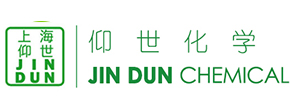126
What is an Environmental Thickener and Why is it Important?
2023/4/21
An environmental thickener is a substance that can increase the viscosity of a liquid without substantially changing its other properties. Environmental thickeners are used for various purposes, such as improving the efficiency and performance of water and wastewater treatment processes, enhancing the quality and functionality of industrial products, and reducing the environmental impact and cost of waste disposal.
Environmental thickeners can be classified into different types based on their chemical composition, mechanism of action, and application. Some common types of environmental thickeners are:
The selection of a suitable environmental thickener depends on the desired application and the specific requirements of the product or process. Different environmental thickeners may have different advantages and disadvantages in terms of effectiveness, compatibility, stability, safety, availability, and cost. For example, some environmental thickeners may be more suitable for certain liquids or processes than others. Some environmental thickeners may also be regulated by authorities for quality control and environmental protection.
Some of the benefits of using environmental thickeners are:
Environmental thickeners are important additives that can enhance the efficiency and performance of water and wastewater treatment processes, industrial products, and waste disposal. By understanding how they work and how to choose them wisely, one can optimize their performance and achieve the best results.
Environmental thickeners can be classified into different types based on their chemical composition, mechanism of action, and application. Some common types of environmental thickeners are:
- - Polymers: These are long-chain molecules that can form entanglements or crosslinks with themselves or other molecules in the liquid, creating a network that traps water molecules and increases viscosity. Polymers can be natural or synthetic, and can be either soluble or insoluble in water. Some examples of polymers used as environmental thickeners are polyacrylamide, polyethylene oxide, starch, cellulose, and alginate.
- - Inorganic particles: These are solid particles that can disperse or aggregate in the liquid, creating a structure that resists flow. Inorganic particles can be either organic or inorganic, and can have different shapes and sizes. Some examples of inorganic particles used as environmental thickeners are clay, silica, calcium carbonate, and iron oxide.
- - Surfactants: These are molecules that have both a hydrophilic (water-loving) and a hydrophobic (water-repelling) part. Surfactants can adsorb at the interface between water and air or water and oil, forming micelles or emulsions that increase viscosity. Surfactants can also interact with other molecules or particles in the liquid, enhancing their thickening effect. Some examples of surfactants used as environmental thickeners are sodium lauryl sulfate, sodium dodecylbenzene sulfonate, and lecithin.
The selection of a suitable environmental thickener depends on the desired application and the specific requirements of the product or process. Different environmental thickeners may have different advantages and disadvantages in terms of effectiveness, compatibility, stability, safety, availability, and cost. For example, some environmental thickeners may be more suitable for certain liquids or processes than others. Some environmental thickeners may also be regulated by authorities for quality control and environmental protection.
Some of the benefits of using environmental thickeners are:
- - They can improve the settling and clarification of solids from water and wastewater streams, reducing the volume and increasing the concentration of sludge. This allows for more efficient dewatering and disposal of sludge, saving space, energy, and money.
- - They can improve the flocculation and coagulation of suspended particles from water and wastewater streams, enhancing the removal of contaminants such as organic matter, metals, pathogens, and nutrients. This improves the quality and safety of water for reuse or discharge.
- - They can improve the rheology and stability of industrial products such as paints, coatings, adhesives, cosmetics, foods, and pharmaceuticals. This improves their performance and functionality by preventing separation, sedimentation, syneresis, sagging, dripping, or spreading.
- - They can reduce the environmental impact and cost of waste disposal by reducing the amount of water and chemicals used in industrial processes. This reduces the generation of wastewater and solid waste that need to be treated or disposed of.
Environmental thickeners are important additives that can enhance the efficiency and performance of water and wastewater treatment processes, industrial products, and waste disposal. By understanding how they work and how to choose them wisely, one can optimize their performance and achieve the best results.

